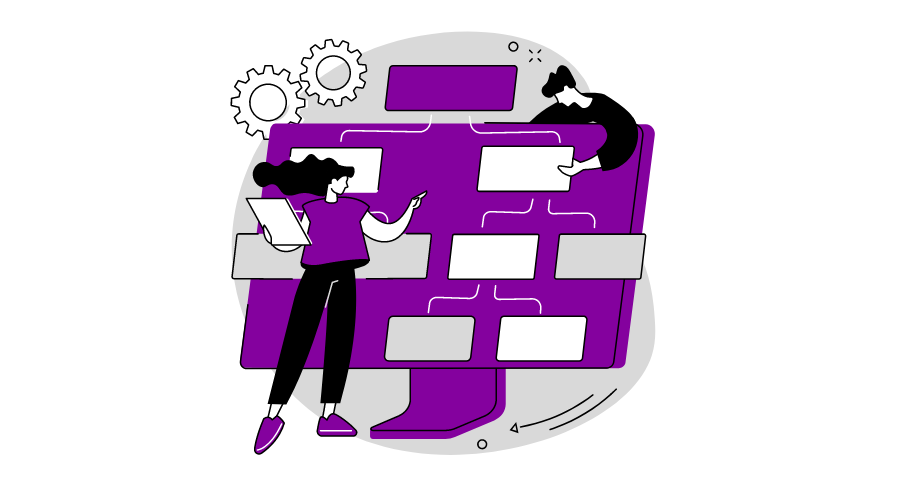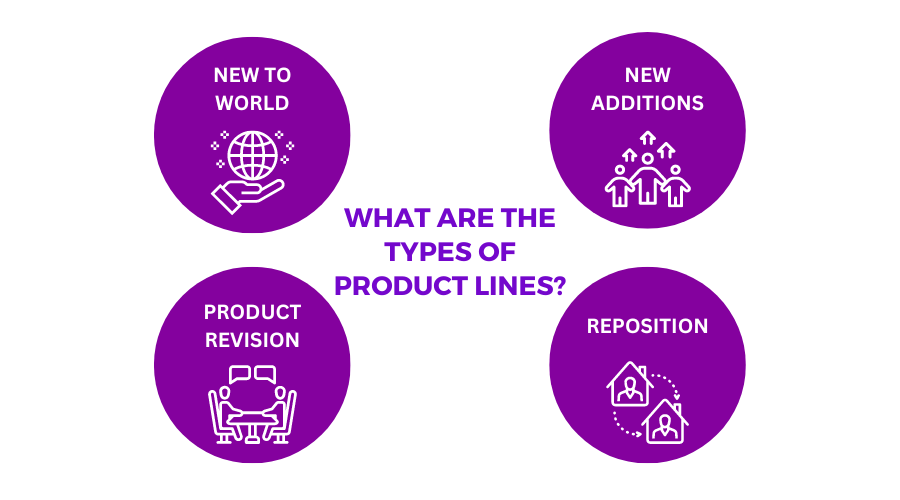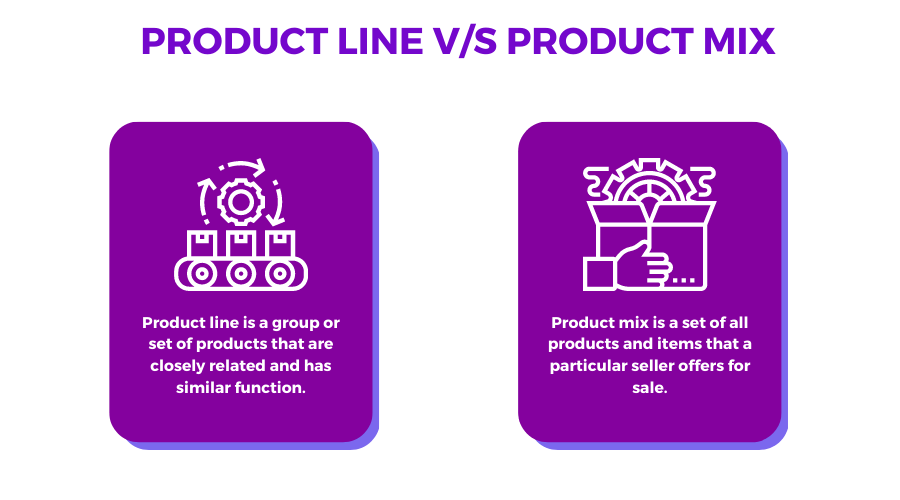
What Is the Product Line?
Product Line Definition
A product line is a collection of related items sold under the same brand. Another way, a product line is a group of associated products offered to customers.
A product line is a collection of products produced by a corporation under a single brand. The products are similar and serve the same market segment.
Maybe they have the same or equivalent functions or channel distribution. Perhaps their physical characteristics, prices, quality, or consumer types are similar. The active product lining is what we call it.
A business can have multiple product lines. Its resources, i.e., how powerful it is, are reflected in the number of product lines it has. An efficient product management tool helps you along the process.
Product line numbers may also indicate how competitive the company is with other players in the market.
In this respect, the term “marketplace” has the same sense as “market” in its abstract sense.
Before going ahead its also important to discuss Product Line Depth.
So “What is Product Line Depth?”
Product Line depth generally refers to the amount of product variations offered by a company within one product line. It is used to find out what deep range of options one product line category has.
For example, “Breakfast Cereal” product line could have a low depth of just 3-4 cereal varieties. Or it could have high depth with 15-20 different cereals catering to every possible taste and dietary requirement.
A good product line depth allows companies to have an extensive enough range to attract customers, without becoming too cumbersome to produce and market effectively. Market research can help determine the right depth level.
How Product Lines Actually Work?
Examine Customer Requirements Again:
When conducting market research for a product or service and developing a customer profile, you may learn that your customers have additional. Or even familiar wants that you are not meeting.
A busy mom, for example, may require a daily calendar app/organizer just as much as a car seat.
Examining the big picture of the customer’s life and regular experiences might provide you with new perspectives. That is what buyers would like from you.
Launch a Revolution:
Customers can’t honestly tell you they have a need or want for revolutionary products and services. Because they are even aware if they need or want it yet. These are the sort of things that customers are shocked by yet always appreciate.
Apple’s iPhone is an excellent example because no one had ever made anything like that technology before.
Customers had no prior experience with it and had no idea how it could improve their lives. Everyone wanted one after they saw how it worked.
Since they’re so distinct from what everyone has done or is used to, revolutionary products can face much opposition or controversy at first.
However, once you’ve persuaded people that your product or service is viable and they realize how much it improves their lives, the product takes off.
Extend What You Already Own:
Looking at what you already have and expanding options and features is sometimes the simplest way to establish a product line. It could be as easy as altering the colors or materials. Or it could be as complex as adding entirely new features.
Good examples include software packages available in three levels: free/basic, moderate, and professional.
Simplify Things:
Customers don’t always want a lot of frills, especially if they’re trying to save money and the extras they don’t need are costly.
So, while some businesses thrive by making their products more complicated, you may also scale things down. This could entail eliminating functionality or repackaging them more user-friendly manner.

Here are a few suggestions:
A food processor model with only the most basic settings, designed to appeal to novice cooks.
An electric, multi-blade razor against a typical straight-edge razor.
The iPod mini is a much smaller device than the iPod original.
Product Line vs. Product Mix
Product line and product mix have several characteristics in common. Both involve goods that a corporation creates and sells to consumers.
Furthermore, a corporation must first have product lines before having a product mix.

When evaluating the differences between product lines and product mixes, there are a few key considerations to keep in mind:
Concept:
A product line is a range of interrelated products that a company sells. In contrast, a product mix is the sum of all the product lines produced by that company.
Depending on the range of items they sell and how much financial support they have, some businesses have multiple product lines. And great product mixes, while others are much smaller.
Factors:
A company’s product line gets determined by several elements, including price range, functionality, target audience, and brand.
Products in the same price range may be in the same product line. At the same time, products with different functions and target audiences may be in a separate product line.
The age of the organization, its financial situation, and its brand identity are all elements that influence the product mix.
Because it already has a brand image and a target audience that buys its products. And an awareness of which goods make a difference for their company.
A company with more experience is more likely to have a more diverse product mix than one that has only been in the market for a few years.
Cross-selling:
Cross-selling is offering things that are connected to or may be helpful to a consumer who is already purchasing another item.
Cross-selling is more likely to be used inside a company’s product mix when selling to clients.
A company that offers technology items, for example, may have several product lines and can cross-sell amongst them.
Consumers may want to purchase a laptop case with their laptops. Thus, the IT industry can recommend that a company buying laptops from them also buy a selection of laptop cases.
Since the products are identical, there would be less cross-selling if shop-bought laptops were from a manufacturer with only one product line and sold laptops.
Captive Pricing:
Captive pricing entails your business taking advantage of a product that you will use primarily to attract many clients.
That product could be a loss leader—a simple item sold for a low price or for free to attract new customers.
The objective is to persuade customers to purchase additional items that complement their original purchase.
Leader Pricing:
Discounting is a crucial component of leader pricing: offering things at a discount encourages customers to enter the store.
The goal is to entice people into your store or onto your website. They’ll be more inclined to pick up full-priced accessories for the discounted product they’re buying and browse further.
Bait Pricing:
This tactic is a little more cunning. Bait pricing entails offering a significant discount on a limited-quantity item.
Bait pricing, like discount pricing, is designed to attract customers to your website or store. Thus you may sell them a similar, higher-priced item once the sale item sells out.
Price Bundling:
Price bundling is a tried-and-true product line pricing technique that entails packaging numerous related items together as a single item.
It can be seen in holiday package deals or car sales when the car gets sold as part of a package with a choice of accessories.
What Are the Product Line Examples?
One of the best product line example is Starbucks. When someone walks into a Starbucks (NASDAQ: SBUX) store, they get exposed to the company’s various product lines. Starbucks, for instance, may offer coffee, tea, snacks, and other products.
Basketball, soccer, and golf may be available at a Nike (NYSE: NKE) store. There could be sub-product lines, such as footwear, clothes, and sporting equipment, under each sports product line.
Another amazing product line example would be Microsoft Corporation (MSFT). It is a well-known brand that provides many prominent product lines, including Windows, MS Office, and Xbox.
FAQs
Product lines are crucial for three main reasons: familiarity, product, brand diversity through market penetration, and value creation.
Expanding your product line can broaden your target demographic and consumer base. It is where providing wide varieties of a single product with varying price ranges might be a good idea. It removes the possibility of losing clients due to pricing considerations.
Product line can be differentiated in various ways:
- New to the world products require R&D and can be highly risky.
- New additions are new product lines a company adds to compete with competitors.
- Product revisions are upgrades to existing products.
- Repositioning involves marketing existing products to different audiences or for different use-cases.
